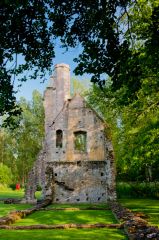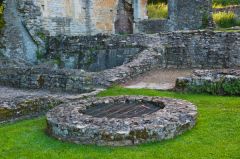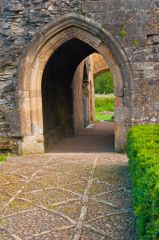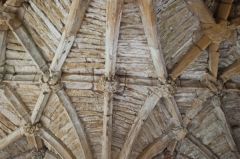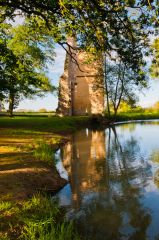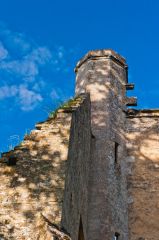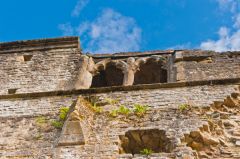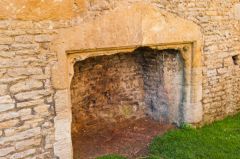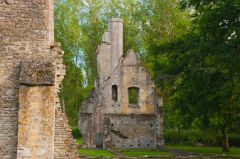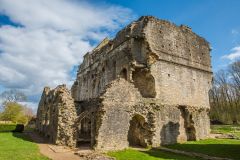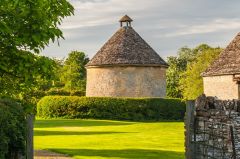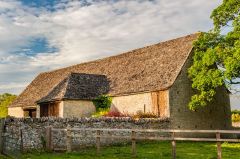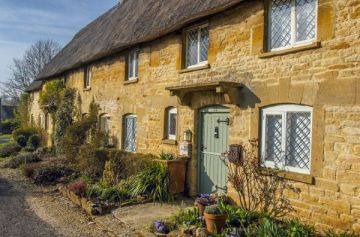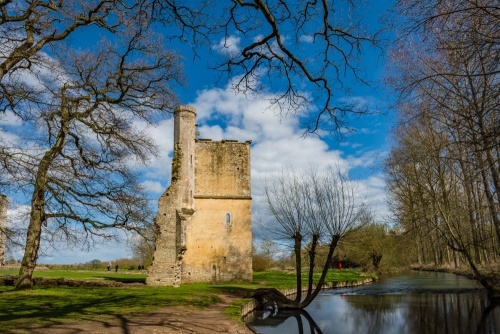
Located in a picturesque position beside the River Windrush in the lovely village of Minster Lovell are the ruins of this 15th-century manor house, home of the Lovell family for centuries. The manor of Lovell was once in the hands of the Crown and appears to have been granted to the Lovell family by Henry I sometime before 1124.
The family name of Lovell came from a nickname for William, one of Henry's barons, who was dubbed Lupellus, which means 'little wolf' in Latin. The name evolved over time to Luvel and then to Lovel, and eventually to its present spelling of Lovell.
The foundations of the 12th-century fortified house built by the first William Lovell may exist under the walls of the present house.
The manor holding passed through a succession of Lovells until John Lovell (d. 1310) was created first Lord Lovell.
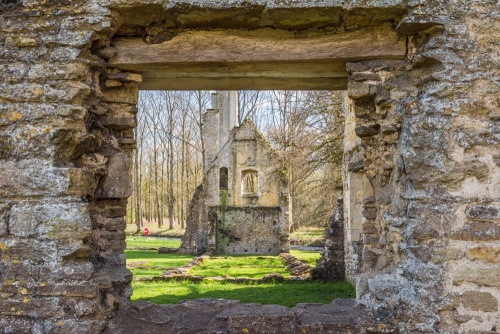
The manor was briefly held by Hugh le Despenser, favourite of King Edward II, during the infancy of the third Lord Lovell. Sometime around 1431 William, the seventh baron, began building a new house by the river to replace the 12th-century Hall. It is an early example of a new style of architecture based less on defence and more on comfort, with ranges of richly furnished buildings centred on a courtyard.
Some of the buildings erected by William Lovell remain almost intact, with beautifully carved details. Nowhere is this more obvious than the stunning vaulted passageway leading from the outer court to the hall. Look up as you pass through the passage and see the finely crafted bosses and oak leaf detailing.
Francis, Lord Lovell, was created Viscount Lovell in 1477, but after he fought on behalf of Richard III at the Battle of Bosworth his estates were seized by the crown. For a time the Minster Lovell estate was held by Jasper Tudor, uncle of Henry VII, and then by a succession of tenants.
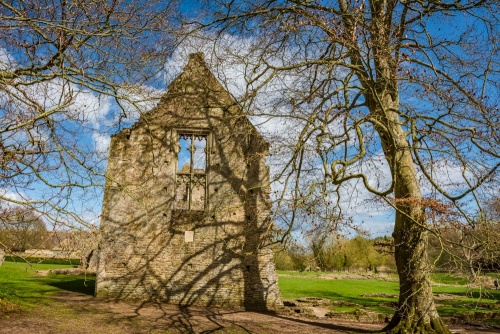
The Hall is constructed of rubble faced with ashlar, facing the river, with a cobbled path leading to the main entrance on the north side, nearest the 14th-century parish church of St Kenelm. Inside the church is the alabaster tomb of William Lovell, who built the Hall.
High walls on the west and south remain, though access to upper floors is not possible. Nothing beyond foundations remain to the east, where accommodation chambers may have been sited. At least one king is known to have stayed at Minster Lovell Hall (Henry VII) and it is possible that Richard III did so also, as a guest of the ill-fated Francis Lovell.
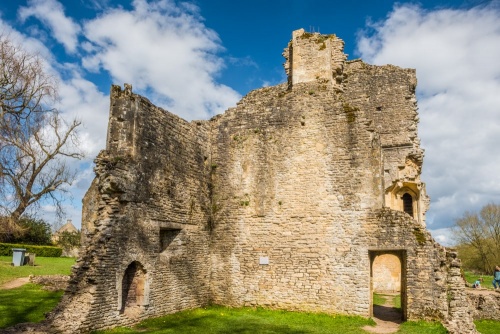
Ghosts at Minster Lovell
Francis, Viscount Lovell, was the last Lovell to reside at Minster Lovell Hall. He was a firm favourite of King Richard III, who made him a Viscount. Other courtiers resented Lovell's influence over the king, and that of his friends Richard Ratcliffe and William Catesby. A rhyming couplet was soon whispered about that ran:
'The Cat, the Rat, and Lovell our Dog
Rule all England under the Hog'
The 'Hog' in this case refers to the boar symbol used by Richard III.
In 1485 Lovell supported Richard III against the rebellious Henry Tudor. The story goes that when Richard was killed at the Battle of Bosworth Field, Lovell fled to his manor of Minster Lovell, where he hid in a secret chamber.
The chamber's existence was known only to an old and trusted servant, who brought his lord food and drink. When the servant died suddenly, Lord Lovell's hiding place became a tomb, as the rebellious lord was left to slowly starve to death, unable to get out of his refuge. It is said that the piteous moans of Lord Lovell can be heard amidst the ruins of his family home to this day.
Could it be true?
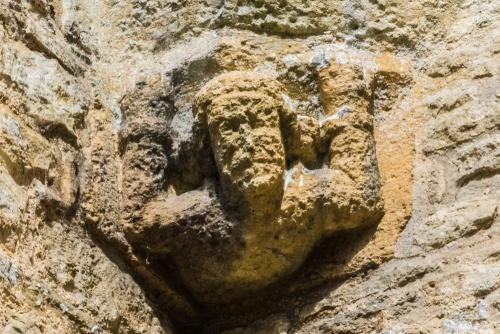
Probably not, for the story did not emerge until the 18th century when it is said that a skeleton was discovered in a locked tower room. We do know that Lovelll's name disappears from the historical record after 1488, so if the story can't be proven, it can't be disproven, either.
In 1602 the Coke family bought the Minster Lovell estate. The most famous of the Cokes was Thomas Coke (d 1759), who inherited a vast fortune and moved the family to Norfolk where he built the opulent stately home of Holkham Hall. By 1747 the once-grand manor house was pulled down and its stones used for other building projects.
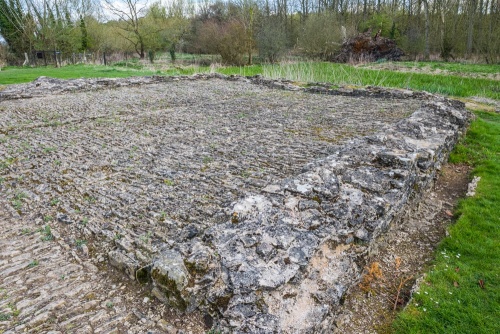
Adjoining the Hall is a 15th-century barn and a circular dovecote of the same period (no access to the interior of either building). These formed part of an array of service buildings that included a stable, buttery, and kitchen.
Parking
There is a small car park about 200 yards from the Hall at the eastern end of Main Road. Enter the churchyard and follow the path that leads around the eastern end of the church. The Hall will be directly in front of you.
Entry
Free
About Minster Lovell Hall
Address: Minster Lovell,
Witney,
Oxfordshire,
England, OX29 0RR
Attraction Type: Historic Building
Location: 3 m W Witney, off B4047
Website: Minster Lovell Hall
English Heritage - see also: English Heritage memberships (official website)
Location
map
OS: SP324 114
Photo Credit: David Ross and Britain Express
Opening Details: Open access site, usually accessible at any reasonable time
HERITAGE
 We've 'tagged' this attraction information to help you find related historic attractions and learn more about major time periods mentioned.
We've 'tagged' this attraction information to help you find related historic attractions and learn more about major time periods mentioned.
Historic Time Periods:
Find other attractions tagged with:
14th century (Time Period) - 15th century (Time Period) - Battle of Bosworth (Historical Reference) - Edward II (Person) - Henry I (Person) - Henry VII (Person) - Medieval (Time Period) - Richard II (Person) - Richard III (Person) - Tudor (Time Period) -
NEARBY HISTORIC ATTRACTIONS
Heritage Rated from 1- 5 (low to exceptional) on historic interest
Minster Lovell, St Kenelm's Church - 0 miles (Historic Church) ![]()
Asthall, St Nicholas Church - 2.3 miles (Historic Church) ![]()
Witney, St Mary's Church - 2.4 miles (Historic Church) ![]()
Witney Bishop's Palace - 2.5 miles (Historic Building) ![]()
Cogges Manor Farm - 2.5 miles (Museum) ![]()
Swinbrook, St Mary the Virgin - 2.8 miles (Historic Church) ![]()
Widford, St Oswald's Church - 3.2 miles (Historic Church) ![]()
Shilton, Holy Rood Church - 4 miles (Historic Church) ![]()
Nearest Holiday Cottages to Minster Lovell Hall:
Minster Lovell, Oxfordshire
Sleeps: 6
Stay from: £865 - 3314
Minster Lovell, Oxfordshire
Sleeps: 4
Stay from: £593 - 1973
Minster Lovell, Oxfordshire
Sleeps: 4
Stay from: £468 - 1594
More self catering near Minster Lovell Hall
